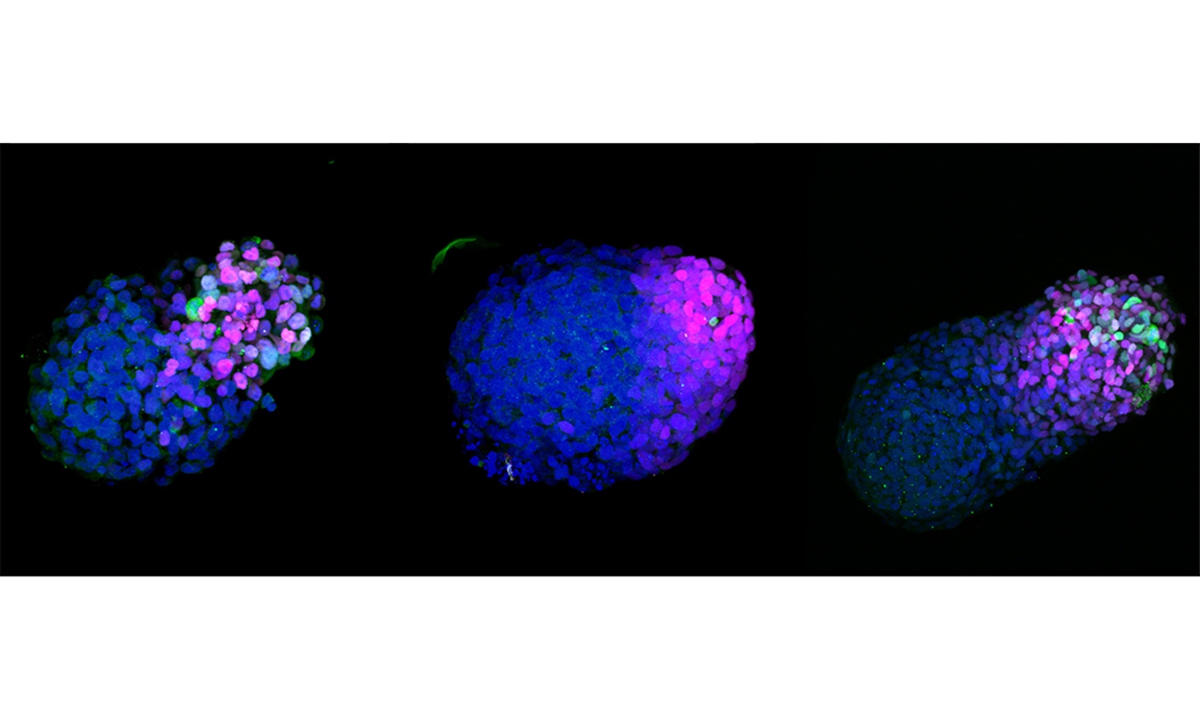New embryo models offer hope for research on miscarriages
Scientists have generated early-stage human embryo models that could help shed light on the "black box" of initial human development stages and improve research on pregnancy loss and birth defects.

The scientists make clear that the models differ from human blastocysts and are not capable of developing into embryos. But their work comes as new ethical guidelines on such research are being drafted and could spark fresh debate.
The teams, whose research was published Wednesday in the journal Nature, believe the models dubbed "blastoids" will aid research on everything from miscarriages to the effects of toxins and drugs on early-stage embryos. "We're very excited," said Jun Wu of the University of Texas Southwestern Medical Center, who led one of the teams.
"Studying human development is really difficult, especially at this stage of development, it's essentially a black box," he told a press briefing ahead of the research's publication.
At the moment, research on the earliest days of embryonic development relies on donated blastocysts from IVF treatment. But supply is limited, subject to restrictions, and available only to certain research facilities.
So being able to generate unlimited models could be a game changer, said Jose Polo, a professor at Australia's Monash University, who led the second research team. "This capacity to work at scale, we think, will revolutionize our understanding of early stages of human development," he told reporters.
Wu's team used two different types of stem cells, some derived from human embryos, and other so-called induced pluripotent stem cells, which have the potential to become any cell and are produced from adult tissue. Polo's team instead started with adult skin cells, but both teams ended up with effectively the same result: The cells began to organize themselves into blastoids, featuring the three key components seen in a human blastocyst.

A combination of scans of a growing human gastruloid (L/R) 24hours/48hours and 72 hours. Scientists have developed a human embryo "blueprint" using human stem cells, in a breakthrough that could provide vital insight into the early stages of infant development, new research showed June 11, 2020. Photo: VCG
Two separate teams found different ways to produce versions of a blastocyst - the pre-embryonic mass of cells at the stage of development around five days after a sperm fertilizes an egg - potentially opening the door for a huge expansion of research.The scientists make clear that the models differ from human blastocysts and are not capable of developing into embryos. But their work comes as new ethical guidelines on such research are being drafted and could spark fresh debate.
The teams, whose research was published Wednesday in the journal Nature, believe the models dubbed "blastoids" will aid research on everything from miscarriages to the effects of toxins and drugs on early-stage embryos. "We're very excited," said Jun Wu of the University of Texas Southwestern Medical Center, who led one of the teams.
"Studying human development is really difficult, especially at this stage of development, it's essentially a black box," he told a press briefing ahead of the research's publication.
At the moment, research on the earliest days of embryonic development relies on donated blastocysts from IVF treatment. But supply is limited, subject to restrictions, and available only to certain research facilities.
So being able to generate unlimited models could be a game changer, said Jose Polo, a professor at Australia's Monash University, who led the second research team. "This capacity to work at scale, we think, will revolutionize our understanding of early stages of human development," he told reporters.
Wu's team used two different types of stem cells, some derived from human embryos, and other so-called induced pluripotent stem cells, which have the potential to become any cell and are produced from adult tissue. Polo's team instead started with adult skin cells, but both teams ended up with effectively the same result: The cells began to organize themselves into blastoids, featuring the three key components seen in a human blastocyst.
